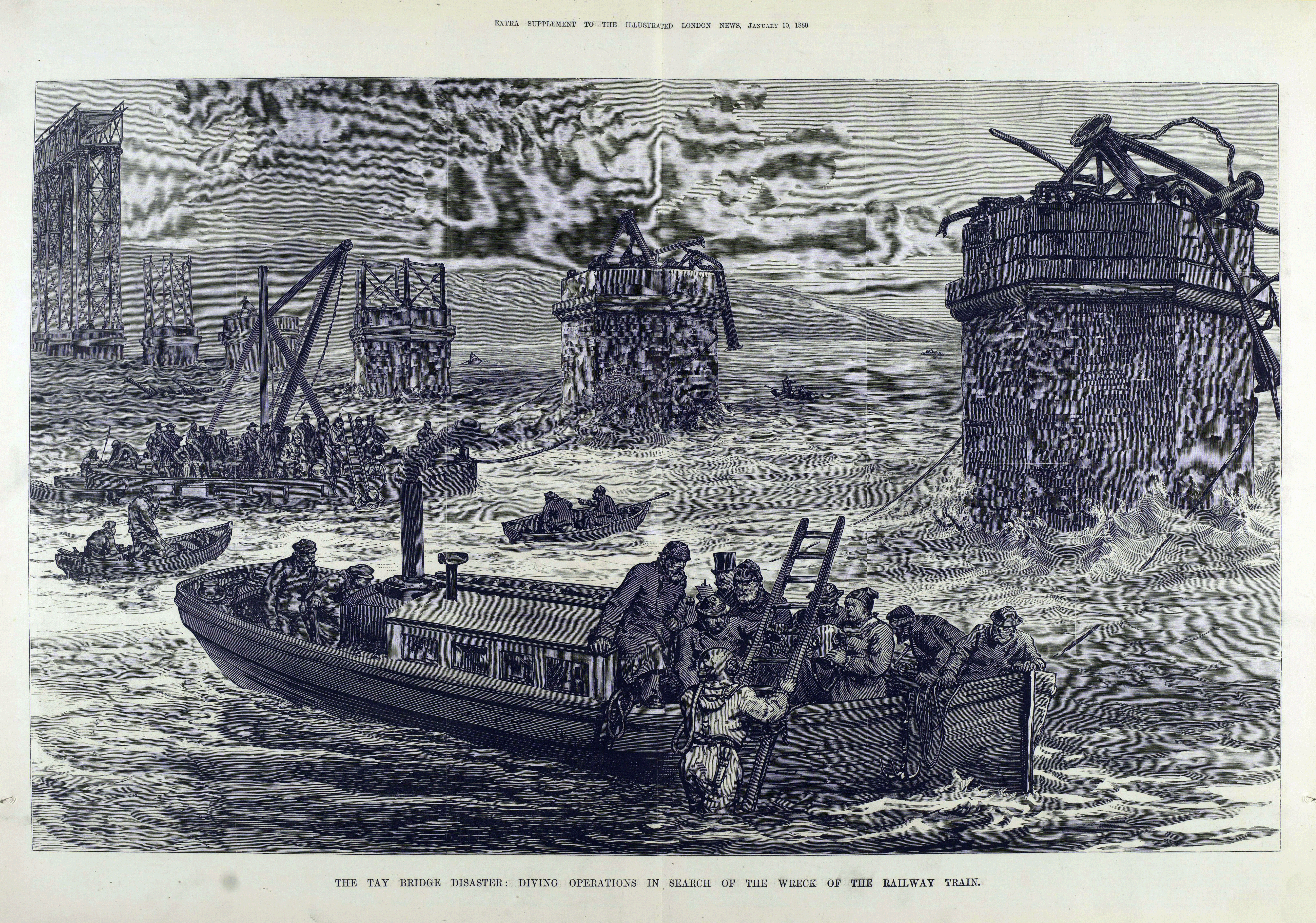
Our latest “Document of the Week” was chosen by our Senior Editor, Dr Tommy Dolan. It is an illustration depicting the aftermath of the so-called “Tay Bridge Disaster” that was published in The Illustrated London News (ILN) on 10 January, 1880.
This was 12 days after the Tay Rail Bridge—designed by Sir Thomas Bouch—had collapsed during high winds, just as a passenger train was crossing over it, killing all onboard. “The loss of life is now reckoned at seventy-five,” the ILN reported, “not one person on the train having the slightest chance of escape”. It remains one of the most deadly railway accidents in British history, one which, rather unsurprisingly, the ILN covered in great detail. Indeed, the various depictions of the grim scenes in the Tay estuary that featured in this particular edition of the ILN evidence just how vividly the paper’s team of skilled engravers could capture events, even in challenging circumstances.
Coverage of disasters and tragedies, particularly those that were symptomatic of the advance of industrial modernity (the “Tay Bridge Disaster” being a tragic case in point), was a salient feature of the ILN. For example, news of the “Great Fire of Hamburg” arrived prior to publication of the first edition of the paper in May 1842. Aware of the commercial rewards to be reaped from the public’s interest in unfortunate events, Herbert Ingram—the paper’s founder—and his reporters scrambled to include coverage.
Throughout its early years, the ILN had a regular “Accidents and Offences” column. This kept readers informed about calamitous events—such as murders and fatal accidents —that, typically, were somewhat smaller in scale than, say, that which occurred in the Tay estuary in late December 1879.
Where to find this document
It comes from our primary source collection, The Illustrated London News, 1842–2003. Containing over 250,000 images, this fascinating and visually stunning collection brings together the extensive back catalogue of one of the most influential and successful publications in the history of British print media. Significantly, this excellent resource has been tagged extensively by our editorial team, meaning that you can search for key words, events, and figures! Visit the collection page to learn more.
